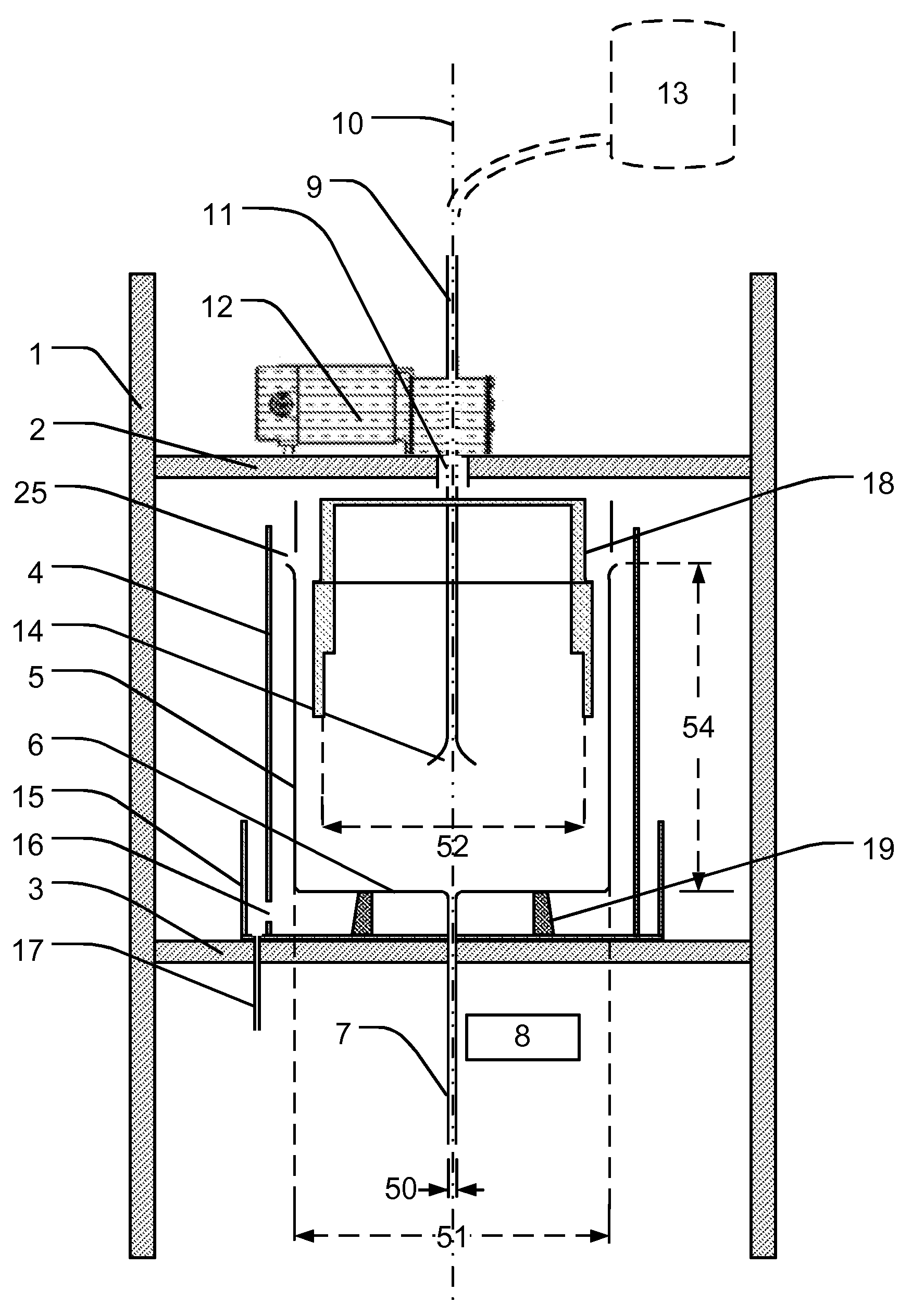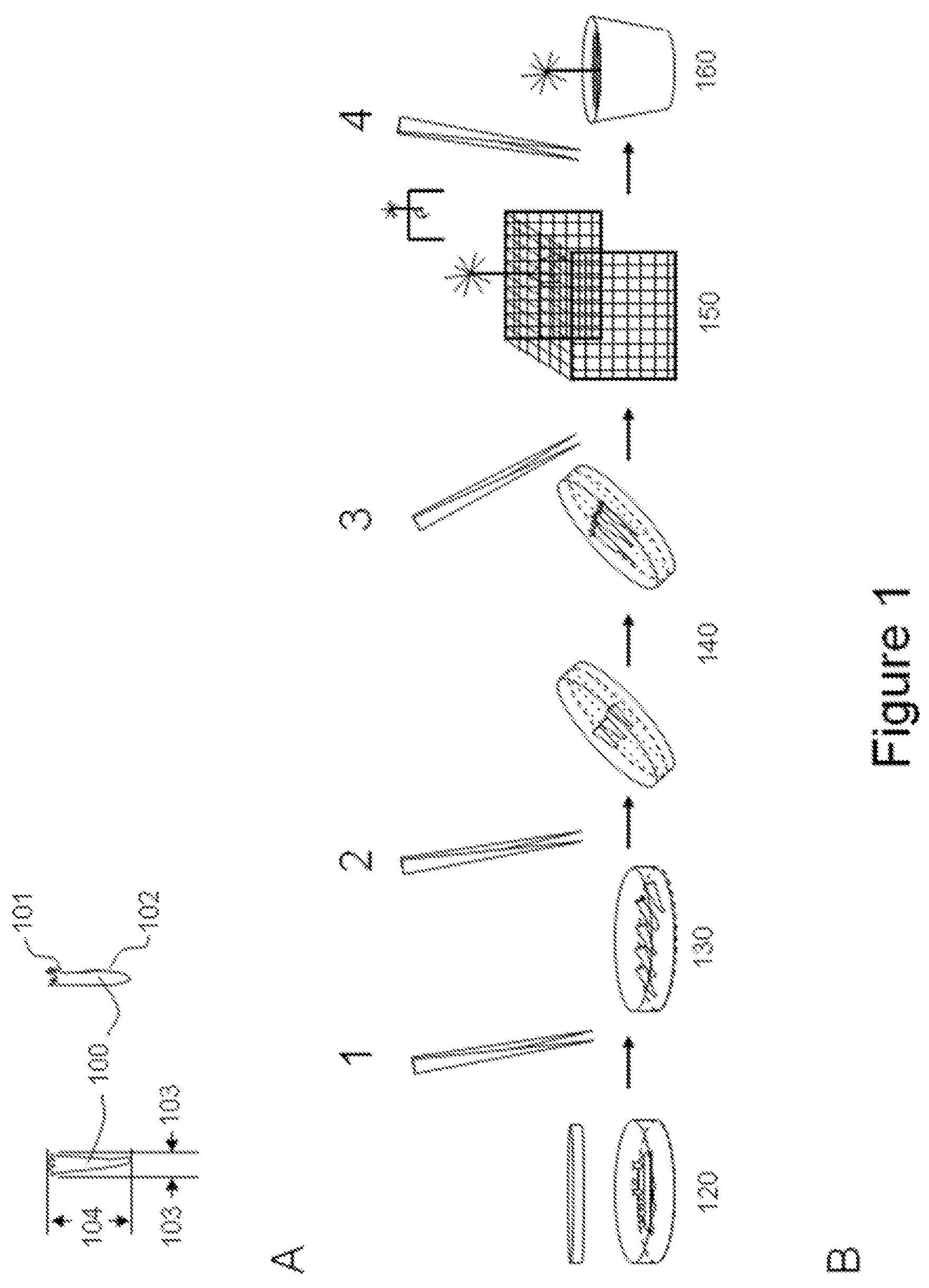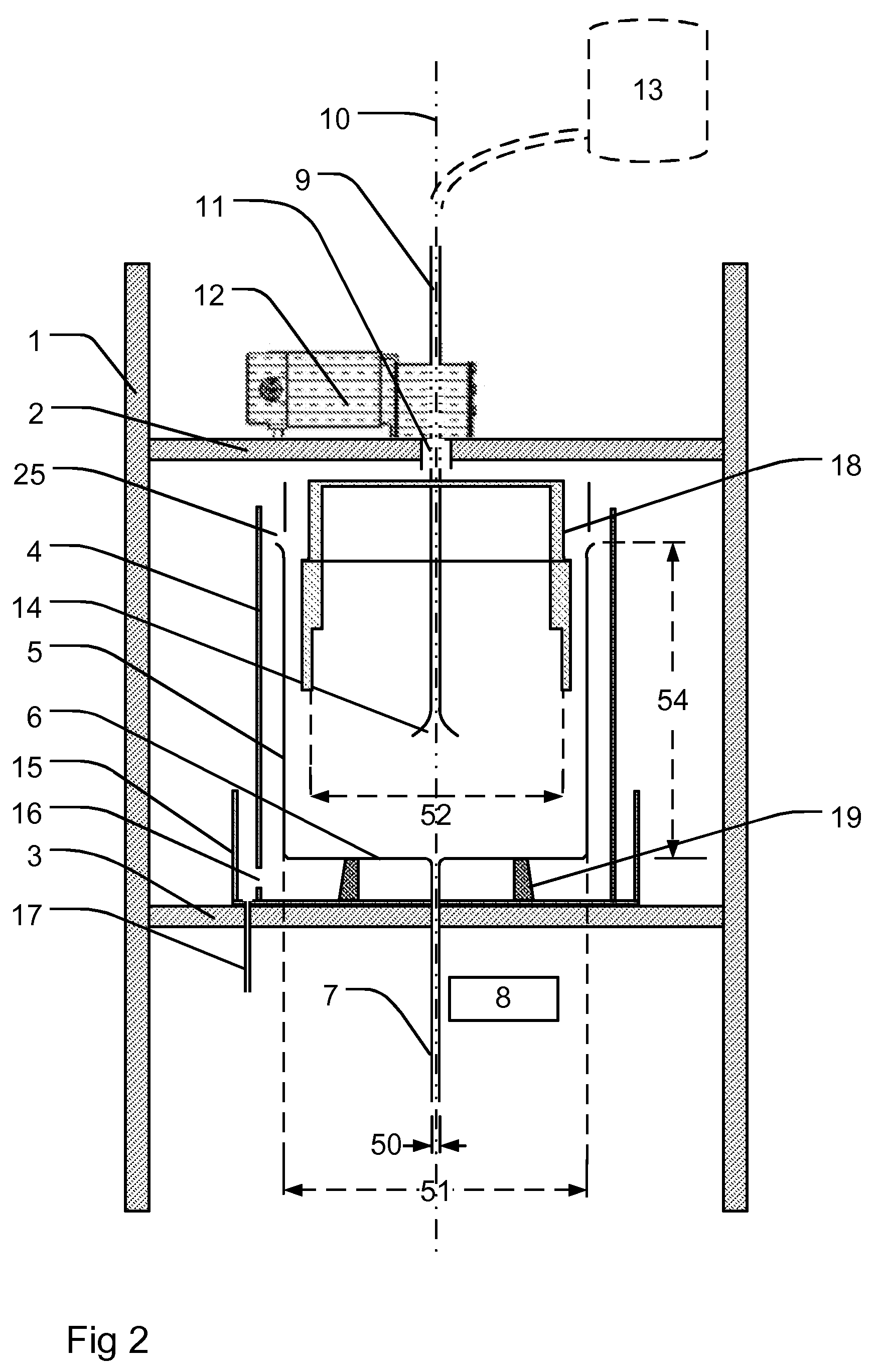Separator device, deposition device and system for handling of somatic plant embryos
a technology of somatic plant embryos and separation devices, which is applied in the field of separation devices, deposition devices and systems for handling somatic plant embryos, can solve the problems of increased manual labor needed to collect embryos, decreased conversion rate, cost and risk of contamination, etc., and achieves cost-effective effects
- Summary
- Abstract
- Description
- Claims
- Application Information
AI Technical Summary
Benefits of technology
Problems solved by technology
Method used
Image
Examples
example 1
Separation
[0375]Several clusters of embryogenic mass of Norway Spruce (cell line 06:28:05) with average hydraulic diameter of the cross-section taken from the mid-section of the cluster ranging from 5 mm to 30 mm were collected from a periodically and partially immersed bioreactor and fed into a disperser of the PCT / US09 / 39981. An in vitro culture container as disclosed in WO9625484 was used as the bioreactor
[0376]Upon passage through the disperser, the embryos fully dispersed in water, were fed through the feed conduit (9) and into the separator container (5). The rotation means (a disk) was rotating at the rate of 120 rpm for more than 20 minutes with the separator container (5) full of water prior to the injection of the clusters of embryogenic mass into the disperser. It is preferred to have the rotation means running for more than few minutes to eliminate the initial transients due to starting of the motor with a stationary liquid. A 500 mm glass flask was placed under the cond...
example 2
Deposition
[0379]The deposition device of the invention, as shown in FIG. 11, comprises an x / y table with linear actuators (315) and a Singulareactor plate with 20 or more containers, each container for one individual embryo. The linear actuators (315) are attached to a control unit (38).
[0380]The embryo receiver is fixed on top of the x / y table in a precisely known position, such that the linear actuator software can accurately position the plate. The embryo receiver plate comprises a plurality of containers, preferably 50 or more, in a grid formation, preferable rectangular grid formation, with a specific centre-to-centre spacing, preferably about 25 mm. The container can have any shape appropriate for the application, preferably conical shape with a flat bottom, as shown in FIG. 11A. The wall and bottom of the container are perforated (305) to allow liquid medium to enter and drain freely into and out of the container. The embryo receiver plate contains a reservoir section (310) w...
example 3
Separation with Two Separation Units
[0381]In order to get pure and well separated mature embryos two separator (230) units were connected in series. The outlet tube (7) from the first separation unit was connected to the feed conduit (9) on the second separation unit. With this set up the amount of immature embryogenic tissue was reduced by 95% or more.
PUM
| Property | Measurement | Unit |
|---|---|---|
| diameter | aaaaa | aaaaa |
| diameter | aaaaa | aaaaa |
| diameter | aaaaa | aaaaa |
Abstract
Description
Claims
Application Information
 Login to View More
Login to View More - R&D
- Intellectual Property
- Life Sciences
- Materials
- Tech Scout
- Unparalleled Data Quality
- Higher Quality Content
- 60% Fewer Hallucinations
Browse by: Latest US Patents, China's latest patents, Technical Efficacy Thesaurus, Application Domain, Technology Topic, Popular Technical Reports.
© 2025 PatSnap. All rights reserved.Legal|Privacy policy|Modern Slavery Act Transparency Statement|Sitemap|About US| Contact US: help@patsnap.com



